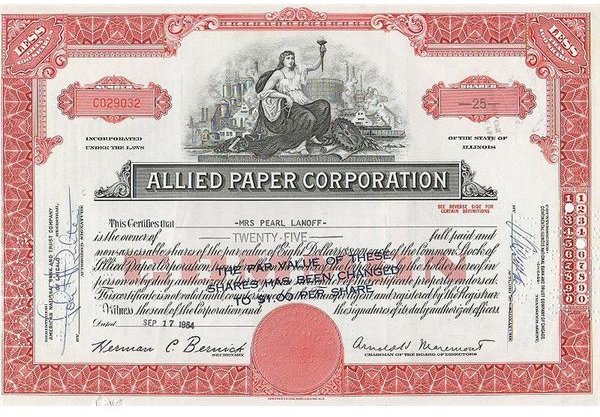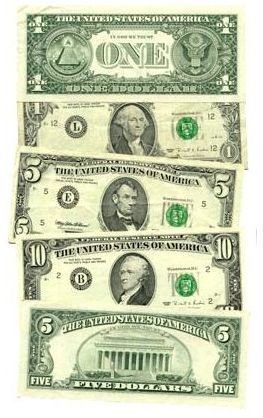Subcategories for Classified Balance Sheet: Definitions and Descriptions
The Objectives of a Classified Balance Sheet
As a tool for financial analysis, a classified balance sheet will furnish the business owner, company management, board of directors, stockholders and other external parties, a quick reference to determine the business entity’s overall financial profile, particularly its liquidity. In order to provide this information at a glance, it is important that the major components, namely Assets, Liabilities and Owner’s Equity/Stockholders’ Equity are subcategorized according to their fundamental accounting values.
Defining the subcategories of a classified balance sheet is a way of providing guidelines to attain the objectives of said financial report. This is to readily indicate liquidity and other valuation concerns. Fast and accurate data may be needed to determine, up to how much can be easily converted into cash as a going concern.
The principle of going concern relates to the ability of the business to operate continuously, using its current resources and without need for further capital infusion. Capital infusion if any will only be utilized for purposes of expansion or enhancement, to take advantage of the income-earning opportunities available. A business owner may want to determine if he still needs to infuse additional capital but will also have to consider where his capital investments are going. There will be greater interest in determining the rate and amount of returns on his investments.
The same is true for investors, particularly those who will be buying into common stocks. They are aware that the company’s creditors will have first priority over the business assets, before their shares can be repaid in case of liquidation proceedings. They need to know where most of the company’s funds go; if the company has available funds in excess of its working capital demand; or if much of the company’s earnings are only being used to pay off debts. Other areas of concern include overspending for construction of buildings and/or procurement of equipment, but with little to show for profits.
Lenders and creditors will share the same interest regarding the overall make-up of the company, and will also look into the proportion of the liquid assets against the outstanding debts, particularly those that will be due and demandable within a year. Analysis will also entail how much of the company’s supposed liquid assets are still carried as accounts receivable. A careful scrutiny can reveal whether these receivables often exceed the actual cash maintained, which can be indicative of poor collection efforts. Defining the subcategories for a classified balance sheet will help the less savvy reader, gain knowledge as to what accounts have significant effects regarding the overall financial conditions of a business or company.
Below are the definitions and descriptions for each balance sheet subcategory.
Current Assets
Current assets include cash, receivables, inventories and prepaid expenses and are presented in this order. The criterion for an asset account to be considered as current is that it can be easily converted into available funds within one year, being the normal period of a business cycle. As a going-concern, this means that the non-cash items will be converted into cash as a result of carrying out the business operations for the whole year.
Management, lenders or investors may require additional reports such as aging of accounts receivable, to determine if any of the receivables carried under this account are already considered as bad debts, and up to how much. Prepaid expenses are usually for a one-year term; hence, the product or the service related to its prepayment will be released to or used by the business within a year.
Inventories, on the other hand, will be matched against the goods sold for the year, to determine how much of the inventory can be converted by the business within the same period. In manufacturing concerns there will be other types of inventory which may include Finished Goods, Goods in Process or Raw Materials Inventory to readily distinguishable how much are immediately realizable.
Please proceed to the next page for a continuation of the subcategory definitions and descriptions.
Long Term Investments

Long term investments include investments in bonds, stocks, land as real estate property for resale and are evidenced by documents issued in the name of the company. These investments are positive indicators for lenders and investors, since funds that were used for these investment products are considered as excess or idle funds.
However, there is much importance in its valuation particularly for investments in stocks when the current market value is less than the acquisition cost. Accounting principles of conservatism require that the value of the investment should be carried in the general ledger books based on the price index that has the lesser value.
In a single proprietorship, whatever long-term investments that the owner purchases for speculation, are documented in his or her name and will therefore form part of personal finances. Even if land was bought using funds realized as income by the business, the funds used will be treated as Drawings against Capital since the title to the land will bear the business owner’s name. Unlike corporations, a single proprietorship does not have the capacity to be recognized as a separate and distinct identity to limit its connection to its owner. As far as satisfying the liability of the business is concerned, the funds to be used as settlement of all obligations will extend up to the personal finances and possessions of the business owner, including the land and investment products.
Fixed Assets/Property Plant and Equipment

For small retail businesses, most of the fixed assets owned are confined to office business machines and delivery vehicles while those engaged in manufacture will have land and building, machineries and transport as well as delivery vehicles.
Fixed assets are carried at their historical costs and depreciated annually over the period of their expected life. If fully depreciated, they will be removed from the books if they are sold or retired, usually at an assigned nominal value for inventory purposes. Analysis of the balance sheet for fixed assets will also consider the income generated in harnessing the usability of the fixed asset investment.
Intangible Assets
Intangible assets are those that have no physical existence or also known as intellectual rights like patents, copyrights, trademarks, tradenames, all of which have significant impact in creating a positive effect for the firm or company they represent. It gives the business the exclusive right to manufacture, formulate or sell a particular product under a specific brand or trade name.
However, the general practice in accounting for intangible assets is that if the intellectual property was developed by the business, the research and developments related to intellectual rights are not to be classified as intangible assets but as part of other assets to be amortized over its legal or economic life, which ever is shorter.
Intellectual properties developed by the business have no valuations whatsoever. The value recognized as Intangible Assets are the amounts paid as goodwill to third parties, in exchange for the license or rights to use, manufacture or sell the exclusive products. However, intangible assets have to be periodically reviewed if its usability is impaired, which can bring down the value of the amount originally paid. Obsolescence for example, can greatly impair the goodwill paid for the intellectual property, because the business’s income earning capacity will also be impaired.
Other Assets
Items included under other assets are the prepayments whose usability and recognition will go beyond one year, pending the realization of an event or occurrence. Prepaid taxes that can be reported as deduction only if the property or product they inure to is sold. They may also be deposits for long term lease contracts, which cannot be applied as rental payment until the term of the lease has expired and the contract is not renewed.
Kindly proceed to the next page for the definitions and descriptions of the Liability and Equity components.
Current Liabilities
Current liabilities include all amounts due and demandable within a period of one year, including accruals for liabilities that are expected to become due but whose payment await a due date, they may also be the prepayments received recognized as unearned income until the product or service they were paid for have been performed or delivered. In some instances, the twelve-months portion of a long term mortgage are classified as current to immediately recognize the portion that will be due and demandable within a year.
Long Term Liabilities
Long term liabilities include all other obligations that go beyond one-year, like long term bank notes, mortgages or accruals that will be paid only if the payee collects on them which usually takes place after a one year period. It includes pension funds put up by employers for employees, wherein the current portions have already been recognized as expenses but the actual payment awaits the retirement of the employee for whom the fund was set up for.
Owner’s Equity
Owner’s equity is the subcategory used to present capital in a single proprietorship and the annual increase or decrease as a result of business operations. Wherein the beginning capital may increase if there were profits realized or if additional investments were infused by the owner, or conversely decrease, if there was net loss or if the owner had withdrawn or used business funds for personal purposes.
Stockholders’ Equity
In a corporation, this portion presents the paid-in capital investment of stockholders and where shares are distinguished as common or preferred. The annual net income or net loss will be presented as increase or decrease of the Retained Earnings account, which is the accumulation of earnings or losses realized as a result of business operations pending the declaration of dividends; or for the appropriation of funds to be used for expansion or investments as decided on by the board of directors subject to approval of the stockholders.
There are also the treasury stocks which represent the company’s shares of stock, repurchased by the company usually when the shares of stock are largely undervalued at the trading floor or securities market. The company will hold on to them as treasury stocks so they can be sold at a higher price at a later date. However, this is not always allowed in some US states or may be subject to limitations as to the number of shares they can hold onto as treasury stocks, to avoid further avenues for manipulating the trading of their own stocks.
After defining the subcategories for classified balance sheet, a sample classified balance sheet and a template will further give you guides in presenting your balance sheet according to their appropriate subcategories. For this purpose, please refer to the article entitled Sample Classified Balance Sheet Template.
Reference Materials and Image Credits Section
Reference Materials:
- https://beginnersinvest.about.com/od/analyzingabalancesheet/a/retained-earnings.htm
- https://www.answers.com/topic/intangible-asset
- https://moneyterms.co.uk/going-concern/
- https://www.investopedia.com/terms/c/currentassets.asp
- https://www.principlesofaccounting.com/chapter%204.htm#Classified balance sheets
Images:
- Wikimedia Commons
